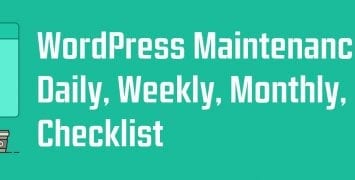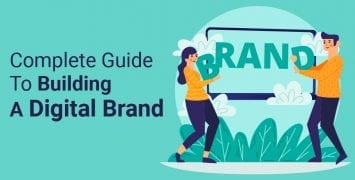Welcome! In our guide to ecommerce SEO, we’ll be diving into the marketing strategies that SEO experts use to drive traffic, and profit, to their own ecommerce sites.
Table of Contents
Introduction
SEO is all about strategy. It’s about picking your target and tailoring your site in order to get the highest SERP rankings possible across as many internet searches as you can.
This is a surefire way to maximize sales, which becomes all the more important when working with an ecommerce website.
When doing SEO for an ecommerce site, the stakes can be more intimate. This is especially the case if it’s your own site with your own sales on the line.
When you’re not a merc working for another site or an affiliate hawking other people’s goods, it can make you afraid to change up your strategy since you’re likely working for your own profit, not for a pre-arranged commission.
Paralysis by analysis is real, and it’s an easy trap to stumble into when creating an SEO strategy for your own store.
If that sounds like you, you’re going to want to read our guide. We’ve kept things simple to make for an easy read while giving you all the info you need to craft a capable ecommerce strategy.
Below we’ve covered what ecommerce is and how ecommerce SEO is different from standard SEO practices, as well as what you should or shouldn’t do to find success.
How Is SEO For Ecommerce Different?

If you have your eyes on ecommerce SEO, the chances are that you’ve got a knowledge base of standard SEO practices, but there are some fundamental differences between the two that even the best of us can ignore. Let’s break down common SEO and ecommerce SEO to find where they differ.
What we’d call standard SEO could be considered a catch-all term for all Search Engine Optimization attempts, including those for ecommerce, with more specific SEO applications having their own rule sets and ways of climbing the relevant SERPs.
If you’re here, you already know what SEO does, it helps your site appear towards the top of results pages where all the clicking is happening. Most SEO is practiced in aid of site monetization, whether that’s an affiliate operation or, you guessed it, ecommerce.
When we say that SEO aims to make your site hit the top of a results page, we mean it. The internet landscape has only gotten more and more competitive in the last decade and being able to hit that first page just isn’t enough for many webmasters out there, you need to be at the very top.
The CTR drop-off is quite dramatic and that linked study comes from 2010-2011 when the online population was smaller than it is today, so even though everyone will get a bigger slice of the pie nowadays it’s still that top spot that gets all the gold.
Since then, we’ve seen the explosion of mobile smartphones that can deliver your site into the hands of thousands… If you’ve optimized your site for mobile-friendly use, that is.
SEO can be a competent marketing strategy when used correctly, using Google’s (or your search engine of choice) algorithms to put your site in front of other people for relatively little overhead.
Without SEO, you’d instead need to rely on PPC or paid advertisements that can be costly to set up and bear inconsistent revenue streams.
So, with the above info in mind, what does ecommerce SEO do differently from other types of SEO? Well, we’ve condensed what ecommerce SEO is and how it’s different into a few handy points.
- First, ecommerce SEO is simply SEO for ecommerce sites. It’s also called shop SEO and is essentially where you try to rank a site that facilitates the sales of a product or service directly. This means you, as the webmaster, would likely make most if not all of the profit.
- We have time to go into more detail later, but ecommerce SEO places more importance on certain pages like category pages, for example. You want to target people who are looking for a specific product and the vague category of products that you stock.
- In the same vein, the site structure is even more important. You’re not an affiliate giving users directions to the nearest retailer, you are that retailer inviting them into your store to browse, and there’s no easier way to lose a sale than to have a confusing site layout.
- The homepage is even more important. It’s the front lobby of your store, not a blog, so it must be an efficient but welcoming and informational landing page that gets clicks, closes sales, and creates loyal customers out of random strangers.
- One aspect of ecommerce SEO that’s the same as other sales-generating SEO practices is product page optimization. This means your site should have clean, convincing, and informative product pages that catch a lot of traffic.
- Unlike other forms of SEO, ecommerce sites will be closing sales themselves. This means your cart and checkout functions should be airtight. This maximizes your conversion rate and thus the profit you make from those sales, and who doesn’t like making more money?
Key Strategies For A Successful Ecommerce SEO Strategy

It’s good to know how ecommerce SEO differs from other types of SEO and how you should pay attention to different parts of your site, but how do you do that well?
We’ll walk you through the entire process right here, so you can have a stable foundation on which to build a successful ecommerce strategy.
We’ve condensed the journey down into eight easy-to-read points, so give it a read or even follow along in real-time as you edit your site and make it the best competitor it can possibly be.
1. Keyword Research
We start out simple enough with some keyword research.
Before taking a shot, you need to line up your sites, and that’s exactly what keyword research is to an SEO campaign.
For ecommerce research, we’d advise you to pay special attention to three areas.
- Find keywords to be used for your homepage and product pages. Homepage keywords ensure your site appears in more vague and directionless searches while product page keywords target those who are ready to buy.

- You can use long-tail keywords on blogs, especially one owned by you, to help your ecommerce site rank. Hit local exact match search volume and low difficulty, there’s no need to go toe-to-toe with the big dogs if you can avoid them.
- Don’t target the same pages with the same keywords, A.K.A keyword cannibalization. You have enough work to do without you self-sabotaging your SEO by getting too over-eager with keyword use. A spreadsheet is great for managing your keywords and where they’re targeting.
2. Site Architecture

We’ve alluded to it already, but the layout of your site is important in creating an effective ecommerce business.
By layout, we don’t just mean the design of each page but how those pages interconnect via internal links to take customers to where they want to go.
Ecommerce sites tend to be bigger and offer products directly, so you want people to get to the goods easily and make their sales.
3. On-Page SEO
This is the bedrock of most SEO campaigns but there are some areas you’ll want to pay specific attention to if you want your ecommerce site to get off the ground.
First, content is king.
There is a demonstrable edge from having content rather than copy and pasting relevant text to your product pages, and it’s much better for the topical relevancy that the giants like Google are moving towards.

In your content, don’t overstuff keywords and kill your SEO campaign before it even begins. There is such a thing as too many keywords and it can be fatal for your site.
Add content to your category page, in particular, that’s where many e-commerce sites tend to sag. By adding informative content and ensuring all internal links are relevant, logical, and accurate, you can get your category page ranking to sweep up vague product searches too.
Adding words that exist in the sales lexicon, as in words like “deal,” “buy” or “shipping” or “review,” are great for generating long-tail traffic to your site, more specifically your product pages.
You want your site’s category and individual product pages to rank so that you mop up all the customers out there, from those who know what they want to those who are just browsing without direction.
4. Technical SEO

Yes, backlinks.
Technical SEO is important for all kinds of SEO and that means you’ll need a link profile for your ecommerce site.
As we said, ecommerce sites tend to be bigger, so simple math and probability dictate you’ll have more technical SEO issues.
This isn’t all inside baseball either, technical SEO profiles often decide which sites rank over one another when all else is equal.
You want that edge, so iron out all technical SEO issues so you’re not falling at the last hurdle. Run technical SEO audits like a madman and especially when you’ve been building out a new section of your site.
Trim your site like a fine bonsai tree and tie the branches so that no ugly technical issues sabotage your site’s performance.
Two of the most reputable tools you can find in the SEO community are SEMrush and Ahrefs, so check them out for all your site auditing needs.
5. Local SEO
This one is important if your site has a physical store somewhere.
If you haven’t already, you’ll want to let Google get real familiar with your business.
That way you’ll enter the search engine’s business database which will help your placement for local SERPs.
If I’m looking for the nearest shoe store, Google will want to recommend me the one four blocks away over one the next town over, even if that competitor’s site outperforms yours in typical SEO.

Go tell Google all about your business to reap the full benefits of having a local presence.
The local equivalent for backlinks when optimizing your local SEO presence is citations. Start with the Yellow Pages, or your local equivalent, and then see if newspapers and magazines can get you a shoutout in the local media environment.
They’ll also have an online presence nowadays, so see if you can’t negotiate links to their local websites to build authority. It’s just like link building but you’re more likely to know or have had contact with the people you’re reaching out to, improving your chances of success.
6. Content Marketing

You’re familiar with the online world, you are part of it, after all, so you should know that you have endless opportunities to become familiar with your ideal client base.
Depending on what your ecommerce site sells, join online communities formed around these products.
Specialized forum sites are great but there are massive sites like Reddit whose entire purpose is to unite people across a wide variety of interest bases that’ll surely encompass whatever it is you’re selling.
Once you’re in, what do you do next? Here’s a handy point-by-point guide:
- After you’ve joined the various communities where your product is popular, scout out the words they use. Learn their language like a foreign infiltrator, picking up which words and phrases they use most often and the contexts they use them in. We’re sure you see where this is going.
- That’s right, you just found some handy new keywords to play with. Create content – good content, as in your best content – aimed straight at these words and phrases. Raise the bar and watch your traffic count rise with it.
- Rinse and repeat! You’ll run out of terms at some point but doing this when starting up a new operation is the great jumpstart that you’ll need to get the ball rolling. Also, if your ecommerce site is based in a field where the terminology changes or gets updated, like tech for example, then you can repeat this strategy whenever some newfangled technological term becomes the talk of the town.
7. Link Building
We’ve already established this is going to be necessary, so let’s get it out of the way and look at what ecommerce link building looks like.
Most SEO folks hate this part because it’s the imperfect combination of tedium and rejection, but there are definitive ways to improve your success rate.
The usual applies, stay away from low-quality sites and especially content farm links.
Google doesn’t take kindly to these sites and you don’t want to become an algorithmic leper by associating with them.

We’ve practiced the barter system since civilization has begun, so offer something nice to quality sites and see if they offer a nice inbound link back, it’s that simple in concept.
HARO is a great resource for finding people in need of a site to link to. It’s Help A Reporter Out and, by registering as a source, you can communicate with journalists and negotiate a deal that’ll be beneficial for you both. You get your link while journalists get a source for a piece they’re writing.
Outdated resources are also great for redirecting expired domains and link-heavy pages towards your own site. This is its own skill that requires training, but it’s possible to root out domains that have expired or been moved.
Grabbing up parked pages and redirecting them to your site is a surefire way to expand your traffic net. They’re also covert, your competitors can’t see these redirections easily, making them the perfect way to gain a much-needed edge.
8. Measure SEO Success

Just like how you need keyword research to plan where your shot is going, you need to see if it actually hit afterward.
Running a site involves a lot of tinkering, so it can be difficult to see if that one change you made alongside twenty others is what’s responsible for that SEO spike you saw on the weekend.
You’re going to need tools that measure this stuff, otherwise, you’re throwing phrases and keywords at the wall and you can’t even see what sticks.
The obvious candidate for this is Google Analytics, they’ll get you an accurate reading on your traffic and the engagement that the traffic is giving to you.
This means you can see how many people have found their way to your site but, more importantly, see any sticking points where engagement is concerned.
Filtering traffic by landing page and location is also great for optimizing on-page and local SEO performances.
Click-Through Rate (CTR) is the important metric to get from your engagement stats, too, since it’ll show how many have liked what they saw and chose your site to click on.
What’s more important, you can break these down by their queries, the country the searches came from, and what devices they used, which can all be used to tailor your content towards those demographics in the future.
The traffic you’re getting will depend on your search rankings and finding these out can be rough because of the personalization that Google adds to your searches.
Don’t search yourself, instead look to SEMrush, Ahrefs, and other sites that provide a Google Search Console for a flat and unbiased view of where your site is ranking.
Even more important than clicks are conversions and the revenue you’re getting from those conversions, assuming you’re running a for-profit business.
10 Common Ecommerce SEO Mistakes To Avoid

When it comes to SEO of all types, you want to avoid mistakes like the plague. It’s possible to stay afloat and adapt your strategy if you aren’t doing the right things, but doing the wrong things is a one-way ticket to search irrelevancy.
1. Inadequate product descriptions, titles, and images
Would you believe that there are people in the ecommerce game who have inadequate or downright inaccurate descriptions for their products?
That’s not you, right? Because that’s a great way to kill your SEO rankings.
Everything in your content, from the titles, images, and especially the product descriptions, should all be accurate and above board.
Tell me, how can you rank for relevancy when your content is irrelevant to the products you’re selling?

On the more technical side, there are a bunch of handy tips that can help you rank a page over other ecommerce sites.
Look at title tags and meta descriptions, as in the 160 characters of text that’ll appear directly under your site on a SERP. Those are the first words potential customers will read, so make them good.
Try to have high-quality product images, obviously, but it goes deeper than that. You should keep file size low so that your site will load promptly and without any resizing issues.
There are image formats that are great for web performance without having to sacrifice quality like WebP, so maybe look into using images in that format from now on.
2. Using duplicate content for product descriptions

Having bad product descriptions also includes wearing out the copy and paste shortcuts on your keyboard.
Don’t be that guy who duplicates content descriptions for their products, it’s once again antithetical to relevancy ranking since you create a soup of shared descriptions, making no individual product page shine when its keywords are looked up.
Keep it unique to get the most out of your product page SERPs. If you have a lot of similar products, ask yourself if you can combine them.
On sites that sell products, they’ll often have all colors and variants of the product share a page where the customer selects which versions they want. This is much better for ranking and standing out when Google does its crawls.
Keep checking your website scripts. That seems like obvious general maintenance advice, but it’s the simplest and most foundational advice that tends to be forgotten.
This is because you can get away with it, for a time. Your site won’t crash and burn if you don’t remove that bunk code that controls a plug-in you deleted last month, but it will harm your site’s load time. This tends to happen with ecommerce sites because of how much larger they are.
3. Mishandling out of stock pages
Handling in-stock pages is going to be great 80% of the time, but what do you do when an item is out of stock?
Slapping the words “out of stock” up there and calling it a day isn’t the best solution.
That’s called poor UX design.
So, what should you put there?
- Provide an ETA on when the product will be available again, so your customers know when to come back.

- Add an option to notify your users when that product is back in stock. Nudges like this are great for reminding your customers to take action and close a deal, and it’s a great customer service gesture that they’re sure to appreciate.
- If the product isn’t available for the foreseeable future, find a similar product, and recommend that. An actually similar product would be nice since many sites think they can get away with improper product recommendations. This is a UX problem dealing with humans, not the almighty algorithm, so make sure that your suggested product is what your human customers will be looking for as a potential alternative.
- During one of those site audits that we should be doing regularly, you’ll want to flush out any products that aren’t in your inventory and won’t come back. You don’t want them cluttering your site and baiting customers where there’s no product to be sold, and so no money to be made.
4. Poor website architecture

We’ve already talked about how poor website architecture is a problem, so let’s go into some more detail about what you shouldn’t do when building out your site.
You’re juggling more pages than most webmasters if you own an ecommerce site, so you should put your UX hat on and figure out how to balance a pleasing and logical site format with SEO performance.
If you’re doing it right, one shouldn’t really come at the detriment of the other.
Splitting your products into categories and subcategories is handy. Even if you stock just one kind of product, you’ll want to split it between the classic sub-categories of gender or cost, or both, whichever is applicable to what you’re offering.
For example, you can separate jackets into men’s and women’s, and that’s before categorizing all the different types of jackets you stock.
You can even add sub-categories for brand, material, color, you name it. This is easy with clothes, of course, but even with tech, you can separate by brand, cost, and whether they offer the newest tech features (think 4K for monitors and TVs) that’s trending.
Focus on what makes logical sense to you, a human, at least we hope. Don’t chase keywords, the purpose of the categorization is to reel people in once they’ve already gotten to your site.
They’ll get to your site via keywords and how they rank on SERPs, but once they’re in your site they’ll look for neat categorizations that appeal to their logic and sense of orderliness.
5. Poor URL structure
Good URL structure needs to come hand-in-hand with a sensical website architecture for you to get the most out of your site.
All the new categories and subcategories can make new URLs that need managing.
Following our jacket example from earlier, say you’re the proud webmaster of www.exemplarjackets.com, a nonexistent site.
You have jackets, obviously, but you can’t present a pile of unsorted jackets to your consumer base.

Watch how the URLs should progress as you add different product filters to narrow down your jacket-wearing options.
- www.exemplarjacket.com/jackets – This is what we’d start with as a customer looks at the jackets on sale.
- www.exemplarjacket.com/jackets?size=L – Then we add a size filter because they’ve chosen L.
- www.exemplarjacket.com/jackets?size=L%material=denim – Now we’ve added that it’s a denim jacket they’re looking for.
- www.exemplarjacket.com/jackets?size=L%material=denim%color=black – And now they’ve specified they want dark denim, so it’s been added to the URL chain.
- www.exemplarjacket.com/jackets?size=L%material=denim%color+black%price=low-to-high – Finally, before making a purchase, they’ve sorted by price to get the most cost-effective option.
The order of each addition to this link isn’t concrete, it’ll change depending on the order the filters are applied. You see what this means, right?
Just one page can have tens of variants, if not a hundred, and this is why ecommerce sites end up being very big. You need to have canonical tags otherwise your SEO game is done.
By adding canonicals to these URLs, the search engine crawlers won’t count all of the different variants. Instead, they’ll only count the root product page and leave the rest to be explored by potential buyers.
Make sure your H1 headings and title tags also have the model numbers of any products you’re supplying, as well as the brand name if that’s relevant.
Be as specific as possible so both the crawlers and customers who know exactly what they want can find your site.
6. Keyword stuffing product pages

Keyword stuffing dilutes the quality of the keywords you are targeting and ranking for too many keywords across too few pages will limit the SERP potential that your site has.
It’s a common SEO mistake since we’re told that keywords are great, but as we said, there is such a thing as too many.
You’d be surprised how many sites make their pages literally unreadable in the pursuit of an extra five, or twenty-five, keywords on that page.
Don’t try too hard, it’ll turn away both your customers and your search engine.
It backfires in a spectacular way, increasing the bounce rates from your page and attacking your site’s SEO, harming your relationship with Google’s crawling algorithms, so you’re losing favor with the two parties that you want to keep on your page.
7. Not using product schema markup
Product schema markup is often neglected, especially by newcomers who might be intimidated by it.
The images you use on your site should be easily findable via Google Image Search functions since you never know where your next customer will stumble upon your site from.
Expanding your options is only a good thing.
It’s pretty simple, just make sure that the image filename and its alt tags are all specific and descriptive, and of course relevant to the product itself, and it should make it easier.

If your jacket images are called image001.jpg or some other vague and useless title, then you have a problem.
People will find their way to your site through images and ranking for image searches using schema markup is a great consolation prize for when you can’t quite crack the relevant keywords or phrases.
8. Using tabs or accordion content

When you’re formatting the product pages of your site, check the product descriptions as well as the specs and accompanying reviews if there’s material there to be displayed.
Is it all laid bare, or is it collapsed?
This has been a debate between UX and SEO specialists for quite some time. From the UX perspective, collapsing these looks much neater and is better for the eyes of your customers.
The SEO perspective, however, has dealt with Google in the past and know that material not immediately visible on-page may be forgotten.
Google’s track record on this, like with many things, has been mired and contradictory. Since 2016 they have said that everything is counted after saying that it wasn’t before then, but some SEO case studies have shown an increase in organic traffic when drop-downs aren’t used.
You’ll need to decide where you fall in this debate, we can’t do that for you.
What we can say is that a hover drop-down menu seems to be a happy compromise between SEO value and UX minimalism since it’s ostensibly counted by Google yet isn’t visible until customers show interest by moving their cursor over the drop-down trigger.
9. Using dynamically generated content
Organic searches rank static pages more consistently, building up a cumulative traffic base that you just don’t get with dynamically-generated content.
Besides, the more unique pages you have, the better, so it’s a good habit to acquire early on.
Don’t worry about having too many, just get into the groove and let the number of static pages grow as your site grows organically.
It also makes for a more solid site structure as you can organize the static pages around categories and other similarities they have.

For example, dynamically-generated content in a subcategory won’t be properly linked to the parent category, meaning that the subcategory won’t rank with the power of that parent behind it.
If you already have an established ecommerce site with many dynamically-generated pages, you may want to reconsider a URL migration. Yes, it’s a lot of work, but your lack of static content could be what’s holding you back, and it’ll benefit you in the long-term.
10. Focusing only on classical SEO ranking factors

Finally, ecommerce SEO is different from standard SEO, that’s the premise of this entire guide, so why would you treat your ecommerce site like any other SEO project?
Being hyper-focused on titles, H1s, or query rankings is fine, but you should be looking even deeper than that.
You should constantly be asking why users are clicking your site over another person’s, and vice versa.
With ecommerce, you’re providing a product, so it’s not as simple as “mine was the first site they saw when the page loaded.”
Product range and pricing are usually where it’s at. Become obsessed with your closest competitors, above and below you, to see what they’re doing right and wrong in comparison to your site.
SEO tools and algorithm pandering will help you out but remember that SEO was always about keeping users on your page instead of someone else’s.
Sometimes the edge you need isn’t found in tech jargon on your site’s back-end, but in good, old-fashioned sleuthing of your competition.
Discussing Ecommerce SEO Case Study Success Trends

Fortunately, we have a wealth of information to draw from when looking at how the big players conduct their own ecommerce SEO.
Think about it, every large retailer has made the leap online over the past two decades and, while they may have name recognition on the streets, every SERP is a free-for-all where even smaller sites can edge out larger, bigger-budget retailers as long as the right SEO strategy is implemented.
That said, we’re not going to get into case study specifics here. We’re going to go over the general trends that we’re seeing in big-name ecommerce SEO, because who better to learn from than the retail industry giants?
- It’s apparent that even the largest ecommerce sites out there have trouble with two things, technical SEO and on-page SEO.
- On the technical SEO side, even the largest sites were reluctant to have long redirect chains and Hreflang integration into their sites, which they seem to be being punished for when compared to smaller sites that have a tighter technical SEO profile.
- As for on-page SEO, the ecommerce giants still struggled with H-tag structure and sub-300 word landing pages, which is a big no-no. Perfect on-page SEO is crucial to ecommerce success. There were also some messy URLs that could do with trimming, so make sure that your URLs are neat and easy to understand by both people and the algorithm.
- Surprisingly, page speed is a problem for larger retailers on the desktop. It would seem that attempts to optimize for mobile have led some retailers to neglect their desktop speed performance when both are key to maximizing site success.
- The best performers seemed to stay on top by virtue of many inbound links tied to quality content, which is all the more reason to employ a rigorous but above-board link building strategy.
What to take from these points? Keep your technical and on-page SEO in order, no matter what. Nothing gives you more of an advantage over larger competitors than a neater SEO profile.
Get Hreflang if you need to and clean up those URLs, try to have at least 300 words of content on your landing pages that are informative without being dense.
The rest of your content should be good, that’s a surefire way to get incoming links. Try to load your site as fast as possible on both mobile and desktop, letting one suffer over the other is unacceptable and it will cost you.
Summary
That’s all we have to say for now. We’re sure the landscape for ecommerce sites will change moving into the future but we’re confident you’ve got it down from here. There’s a lot of plates you need to spin, so refer back to us when you get stuck and you should find something that can help.
We can do you one better, actually, here’s a point by point breakdown of our entire guide:
- Optimize all of your content for keywords, but not too much, while creating unique and original content that isn’t duplicated or dynamically-generated. Keyword stuffing suffocates SERP potential and can offend customers, so leave well alone after you’ve ranked for the terms you were targeting.
- When an item goes out of stock, give its page some TLC. Add as much info as you can to draw customers back when it’s in stock, which you should give an approximation of. If you have the means, set up notifications for them. If the product isn’t coming back, then recommend them a similar product and clean out any unnecessary code corresponding to the unavailable product.
- Decide product categories and subcategories based on UX, not suspected keyword volume, and use canonical tags to avoid a meltdown in the Google indexing algorithm that’ll only obfuscate your useful site pages and harm SEO performance.
- Use product markup schema so that image-finding tools can find your products and display them properly, increasing traffic by this means. Remember this option when you can’t crack a keyword or phrase, it could be a consolation prize that your competitors haven’t thought of.
- Use hovering menus to get the best of both tabbed and un-tabbed content. It looks good from the UX point of view while not sabotaging your page in Google’s search rankings, so it keeps the SEO side of things running smoothly. Descriptions, reviews, specs, slap a hover-triggered drop-down menu on all of them if you don’t want to have them on the page permanently.
- Use good old competitive tactics like research on your competitors’ prices and product ranges. Offer more than what they are for less where it’s financially viable. Combining old school market aggression with an airtight SEO strategy can be the key to edging out your opponents and reaping the spoils.




